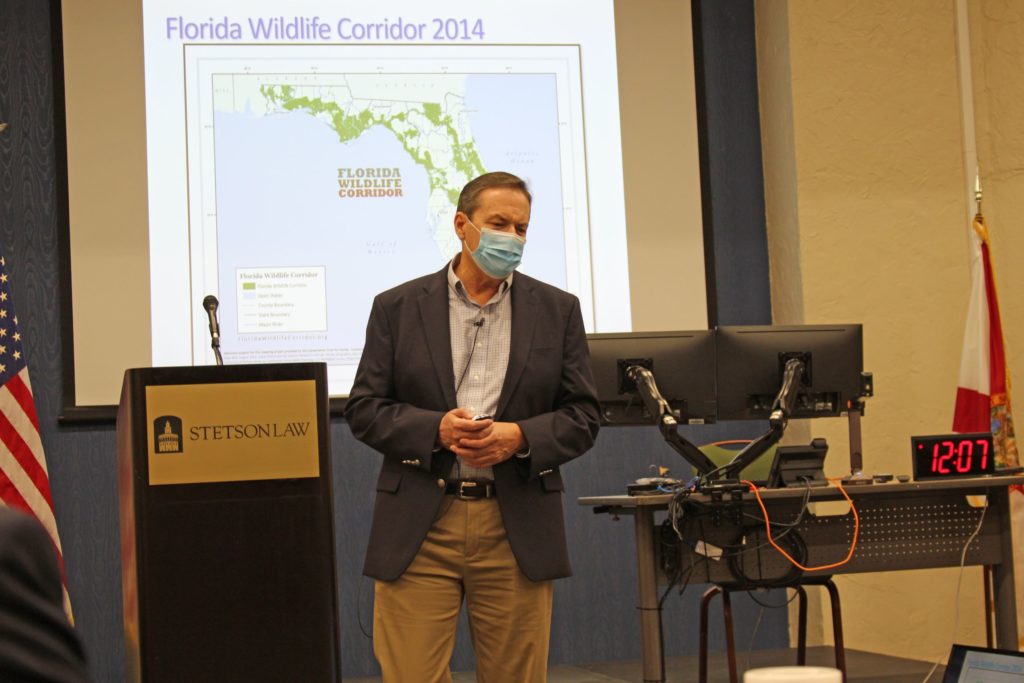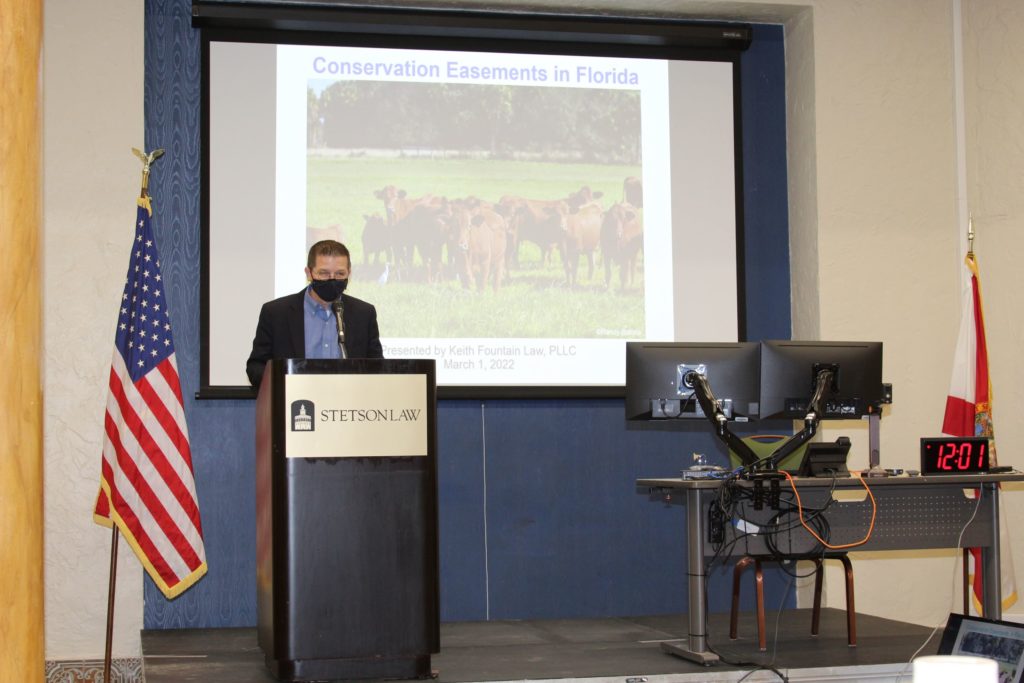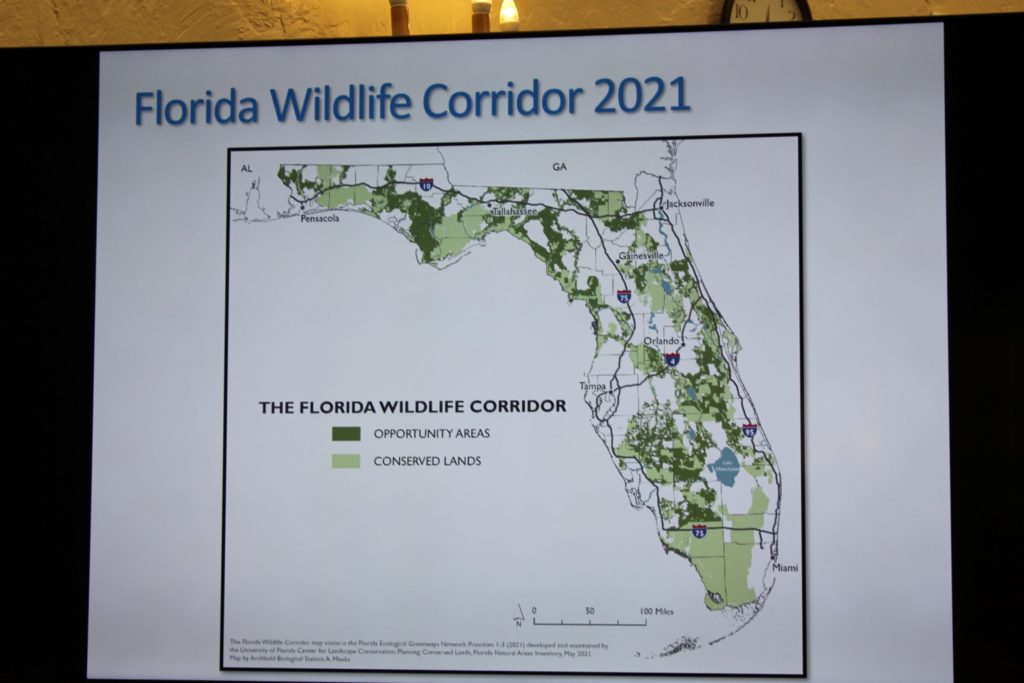Attorney Keith Fountain on How Ranchers can Help Florida’s Environment

With urban sprawl covering so much of Florida’s landscape, it can be easy to forget that farming and ranching were once the state’s biggest industries. Yet even with widespread building on open land, there’s still quite a lot of undeveloped land dedicated to farming, ranching and timber in the Sunshine State.
Attorney Keith Fountain, who spoke as part of Stetson Law’s Edward and Bonnie Foreman Biodiversity Lecture Series on March 1, has been helping protect what remains of these lands through transactions called conservation easements for nearly 30 years.

Professor Royal Gardner, director of Stetson Law’s Institute for Biodiversity Law and Policy, said Fountain is “the expert” in conservation easements in Florida. Fountain also helped facilitate discussions that ultimately resulted in the establishment of the Everglades Headwaters National Wildlife Refuge and led preservation and restoration efforts at the site.
Preserving land through easements
So far, Fountain has worked on 4,300 transactions related to such deals, totaling over $800 million.
That may be a lot of money, but the land’s actual value can be substantially greater, he said, given how they can be the key to ensuring Florida’s most important watersheds and other open lands remain as contiguous and intact as possible.
It’s important to protect critical watersheds in areas like those that make up the Florida Wildlife Corridor – for wildlife conservation as well as protecting the water resources Floridians rely on.
“Many of those lands contain very important environmental attributes,” Fountain said.
A small piece of the puzzle
While conservation lands managed by federal, state, and local authorities cover nearly 11 million acres in Florida, easements are a lot less common. Of Florida’s 34.7 million acres, just 915,000 of them are protected via conservation easements, which are set up through the Rural and Family Lands Protection Program and other methods.
Much of this land is concentrated in Central Florida, where cattle ranchlands still cover the landscape, and the Panhandle, an area where timber is a historically important industry.
Fountain gave a detailed overview of the types of easements available, how their terms can be enforced through courts, some of their limitations, and their place within the context of broader land conservation programs such as Florida Forever and Amendment 1, a land-buying measure on Florida’s ballot in 2014 approved by 75 percent of Florida voters. Funds like those offered through the two latter programs have been subject to the will of lawmakers potentially at odds with their cost to taxpayers or the limits they may place on certain industries.

Conservation easements, on the other hand, aren’t as directly affected by politics. Instead, they’re an agreement between a property owner and the organization that is procuring the easement, which is typically an environmental nonprofit or a government agency.
While every conservation easement is different, they all aim to protect land by barring future development on a property while, in many cases, letting the landowners continue to use the land for their business as long as it does little or no harm to the ecology there. Plus, they can offer generous tax incentives for preserving the land.
“There’s a lot of income tax benefit here available to people,” Fountain said. “Sometimes these are large pieces of property.”
Those properties may be the key to protecting Florida’s natural resources for future generations, Fountain said. That is, if residential development, mining and other demands of an ever-growing population don’t get there first.
“I don’t know how long we’re going to be able to do this stuff at scale in Florida,” said Fountain. “We’re running out of time.”
Learn more about the Institute for Biodiversity Law and Policy.
Post date: March 3, 2022
Media contact: Kate Bradshaw
[email protected] | 727-430-1580